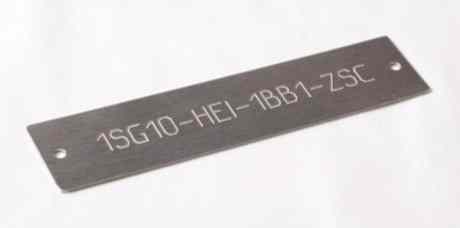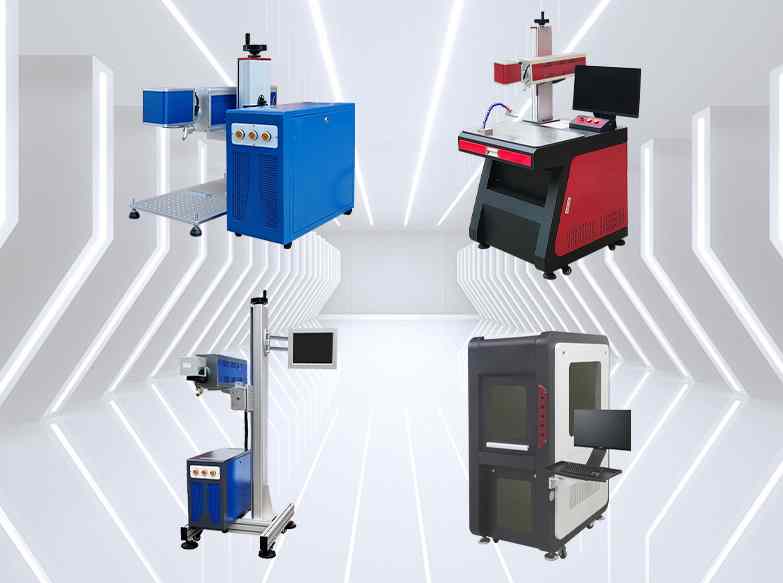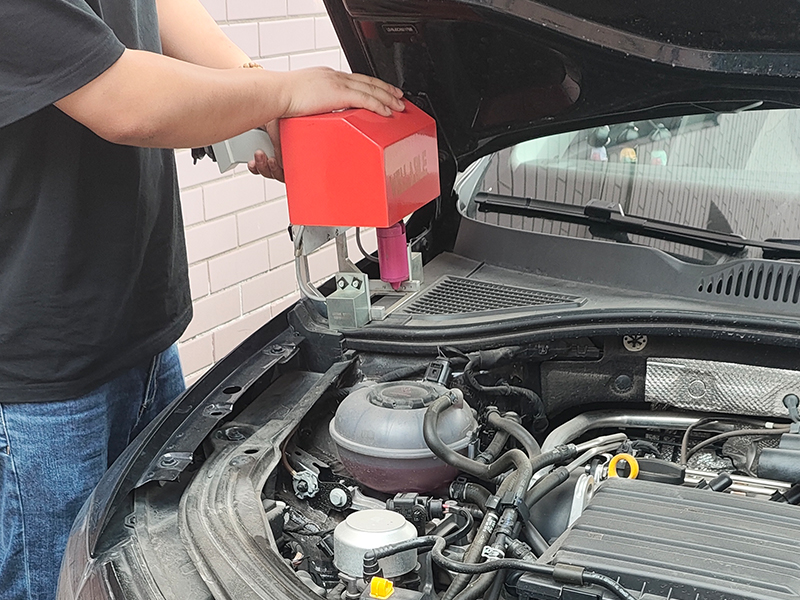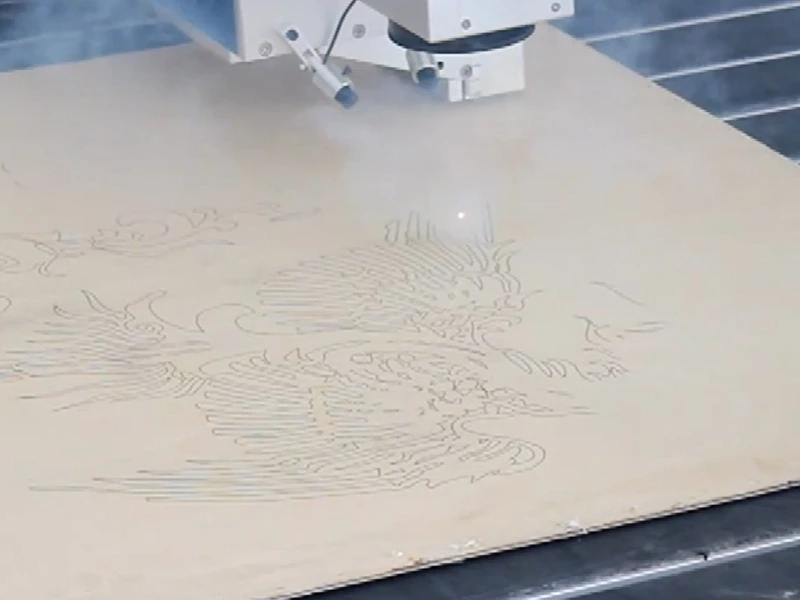How Metal Tag Engraving Works & Which Machine You Need
Discover everything there is to know about metal tag engraving – its processes, available machines (dot peen vs laser), industry applications and benefits. Discover the differences between durable dot peen marking and high-precision laser engraving; such as speed, material compatibility and cost considerations. Whether you require permanent ID tags for industrial parts, aerospace components or asset tracking solutions this guide helps you select an engraving solution best suited to you.
Plus, receive expert tips for optimal marking quality and machine maintenance. Find your ideal metal tag engraving machine for stainless steel, aluminum and more at Zixu! Our dot peen and laser systems create long-term engravings with flawless engravings – come take a deeper look.

Applications of Metal Tag Engraving
Metal tag engraving serves as a critical identification and tracking solution across numerous industries, offering permanent, tamper-proof markings that withstand harsh conditions. Here are the key applications where metal tag engraving excels:
1. Industrial Equipment & Asset Identification
In manufacturing plants, oil refineries, and utilities, engraved metal tags play a critical role in labeling pumps, motors, valves, generators, and pipelines. These tags often include serial numbers, equipment specs, and maintenance dates, helping technicians perform quick, accurate service. Because the environment may involve heat, chemicals, or physical wear, engraved metal tags—especially those made from stainless steel or anodized aluminum—are preferred for their long-lasting legibility and resistance to corrosion.
2. Compliance & Safety Labeling
OSHA, ANSI, and ISO require durable safety and compliance labeling on machinery and infrastructure, meeting OSHA, ANSI, and ISO requirements with permanent, tamper-resistant identification that won’t fade, peel, or smudge like printed stickers do. For instance: high voltage warnings; lockout/tagout procedures; load capacity plates on cranes/lifts etc – these tags protect workers while helping facilities pass inspections!

3. Military & Aerospace Part Tracking (UID Tags)
In defense and aerospace industries, every part must be easily traceable throughout its entire lifecycle. Metal engraving allows the production of Unique Identification (UID) tags that comply with MIL-STD-130 government standards; these tags often feature Data Matrix codes, serial numbers, manufacturing data as well as unique serial numbers engraved using lasers or dot peen machines to ensure readability even under challenging conditions such as vibration, heat exposure or fluid exposure.
4. Medical & Laboratory Equipment Labeling
Hospitals, pharmaceutical manufacturers, and research labs require precise labeling of tools, machines, and sample storage units. Metal tags engraved with part numbers, usage instructions, or sterilization records are vital in environments where high-temperature autoclaves, harsh disinfectants, and frequent handling degrade typical labels. Stainless steel engraving ensures longevity and hygiene compliance, while laser engraving allows fine detail for compact instruments and surgical kits.
How Metal Tag Engraving Works

Metal tag engraving involves permanently marking metal surfaces with text, numbers, logos or barcodes for identification and traceability purposes. The process starts by designing the layout using CAD or engraving software where details such as font size, positioning and content can be finalized before moving on to cleaning up and polishing of a tag usually made of stainless steel, aluminum, brass or anodized aluminum for optimal results and smooth, contamination-free surfaces.
The engraving method depends on the machine type.
Types of Metal Tag Engraving Machines
- Rotary Engraving Machines: These use a high-speed spinning carbide or diamond-tipped cutter to physically carve into the metal surface. Rotary engraving produces deep, tactile marks and is well-suited for harsh environments, but it generates burrs and requires tool maintenance.
- Fiber Laser Engraving Machines: Fiber lasers use a highly focused beam of light that creates precise high-speed engraving of fine details such as barcodes or serial numbers onto metal surfaces without physically altering their surfaces – ideal for high volume engraving of stainless steel, aluminum, brass and titanium alloys.
- CO2 Laser Engraving Machines: CO2 laser engraving machines tend to perform best on coated or anodized metals instead of raw metal surfaces, making them excellent for marking aluminum tags with high contrast marking. They may work less effectively on hard metals without first pre-treating.
- Dot Peen Engraving Machines: These engraving machines use a stylus that strikes the surface to form small dots that form letters or codes, often used industrial settings requiring heavy wear resistance or chemical exposure marking parts with these durable marks.
After engraving, metal tags may go through post-processing steps such as cleaning, deburring or paint filling to further improve readability and enhance durability. Metal engraving provides long-term identification across industries due to its resistance against environmental stressors such as stress corrosion and chemical attacks; making this form of permanent identification indispensable.
Which Type of Machine Do You Need?
Selecting an engraving machine depends on factors like use case, material type, production volume and desired mark durability. Here’s some help in making your decision easier:
1. Consider Your Application
To determine your primary goal, start by considering which technologies would best meet it. Rotary engravers or dot peen machines may suffice when labeling equipment without high visual detail demands, while fiber laser engravers offer more precision and detail when engraving serial numbers, barcodes or logos with compliance or branding in mind.

2. Select an Appropriate Machine
For metals such as stainless steel, brass and titanium — ideal materials to be engraved using fiber lasers and rotary engravers — fiber lasers or rotary engravers provide ideal results, while CO2 lasers deliver dramatic contrast by gently stripping away surface layer residue cleanly. Dot peen machines offer additional versatility by accommodating many harder alloys found in industrial settings.

3. Calculate Production Volume
For high-throughput operations, fiber lasers offer fast engraving speeds with minimum maintenance needs – making them the go-to solution in manufacturing lines or serial production environments. However, for mid- to low-volume jobs rotary or dot peen systems provide cost-effective performance with cost-saving performance characteristics.
4. Weigh Budget vs. Long-Term Value
Rotary and dot peen machines have lower upfront costs, making them a good choice for small businesses or occasional use. Fiber lasers, while more expensive initially, offer higher speed, precision, and virtually zero consumable costs, making them a strong investment for long-term, high-frequency use.
Best Practices for Metal Tag Engraving
To achieve high-quality, durable results in metal tag engraving, follow these essential best practices:
1. Prepare Your Material Accurately: Prior to engraving on metal surfaces, ensure they are thoroughly cleaned to remove oil, dust, or coatings that could diminish mark quality and result in sharp lines with consistent depth. A well-kept surface ensures clear markings.
2. Utilize Appropriate Settings: Always conduct test engravings to fine-tune your speed, depth, and power settings. With rotary or dot peen machines, adjust feed rates and pressure, while with lasers, calibrate power/frequency settings depending on material properties.
3. Optimize Your Artwork: For best results, employ vector designs with high contrast and clear lines and fonts; overly thin fonts or complex graphics should be avoided when producing tags with small tags or rough materials.
4. Maintain Your Equipment: Regularly inspect and replace worn cutters, stylus tips, or lenses as soon as they become damaged or worn down to maintain accuracy in testing. Also, dust or debris buildup in the machine must be cleared away in order to reduce errors caused by inaccurate readings.
5. Amplify Legibility: For improved legibility in low light or outdoor applications, paint fills or oxidizing agents should be added after engraving to increase legibility. This technique is particularly helpful.

Choosing the right metal tag engraving solution depends on your specific needs for durability, precision, and production requirements. Dot peen machines excel in harsh industrial environments, while laser systems deliver unmatched detail for complex markings. By following proper preparation, operation, and maintenance practices, you can ensure consistently high-quality results.
Ready to find your perfect engraving system? Contact our experts today for personalized recommendations, or explore our range of reliable dot peen and laser marking machines designed for professional results.
Recommended Products




